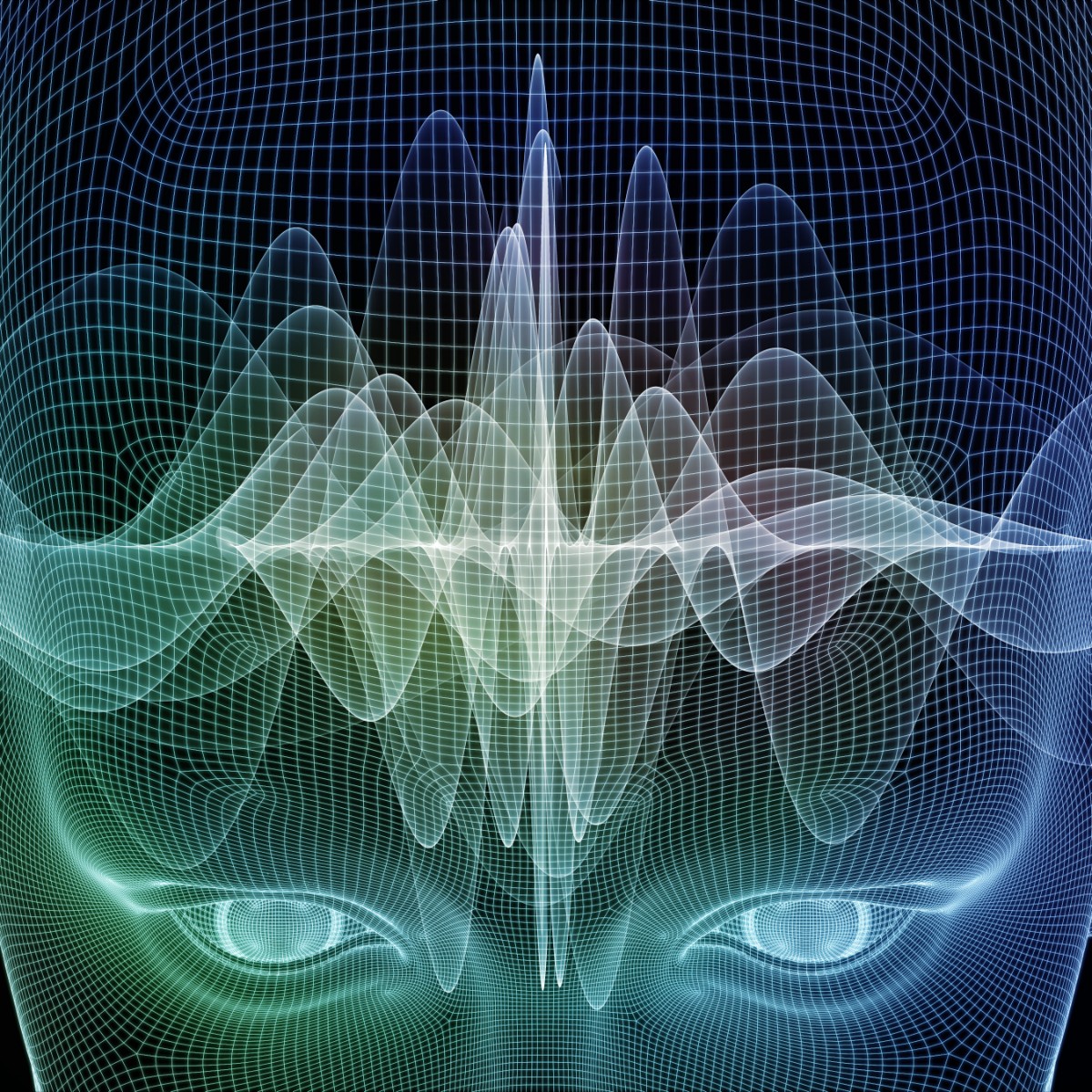Prefrontal cortex (the thinking brain)
The prefrontal cortex is the front-most part of the brain. Basically, it is the whole surface of the front third of the brain, sitting just behind the forehead. It is the most recently evolved part of the cortex. In humans is bigger than in other animals.The prefrontal cortex is the center of planning and decision making circuits. It is also responsible for controlling impulses and motivation. It helps manage your emotions and desires so that you can plan for your future.
The prefrontal cortex is arranged along two axes - vertical and horizontal - which divide it into for quadrants:
- Top- middle => Dorsal Medial
- Top-side => Dorsal Lateral
- Bottom-middle => Ventral Medial
- Bottom-side => Ventral Lateral
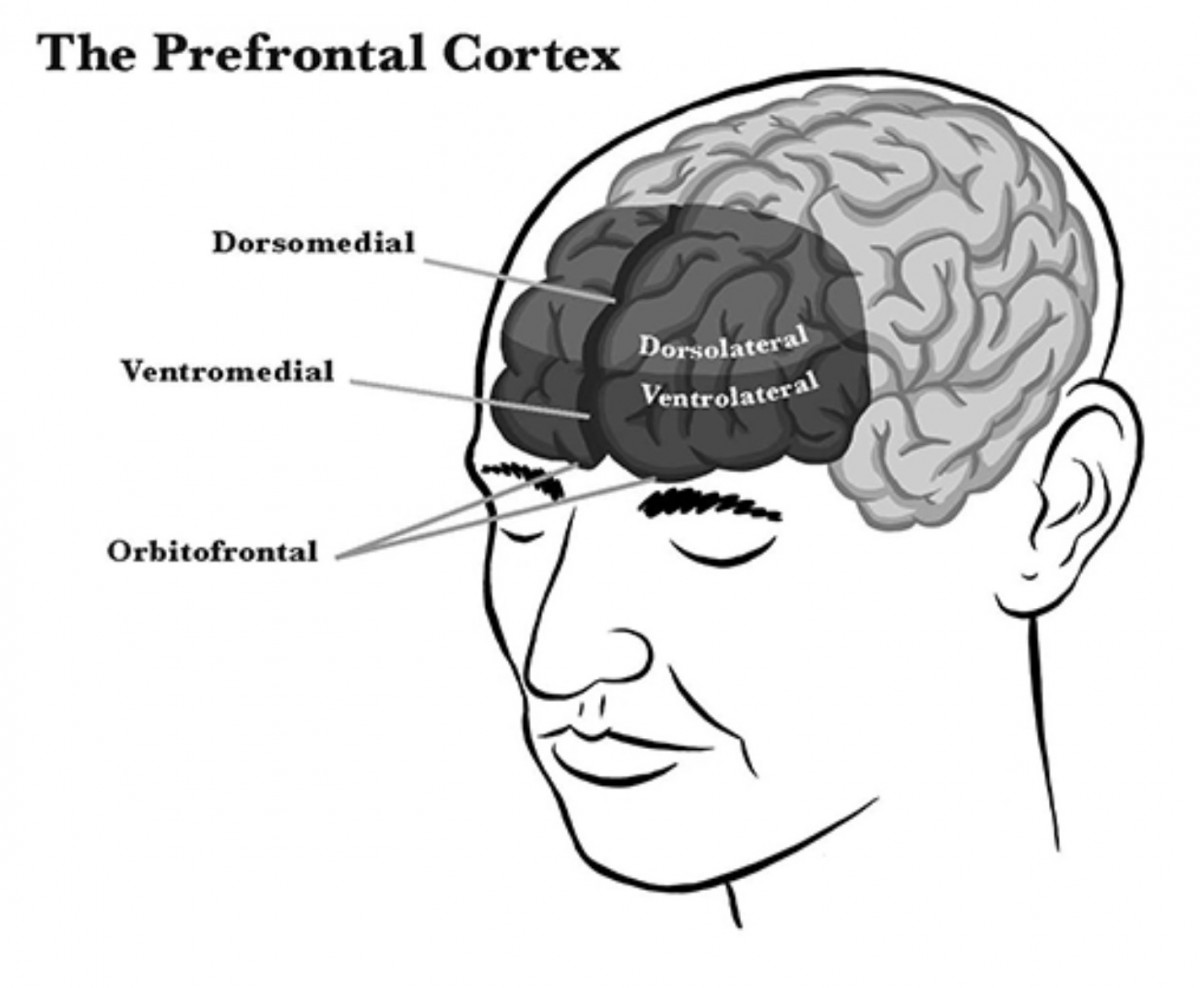
Each quadrant of the prefrontal cortex is primarily responsible for different group of functions. The medialparts are more self focused, while the lateralparts are more focused on the outside world. Along the vertical dimension, the ventral parts are more emotional, while the dorsal parts are focused more on thinking.
The ventromedial prefrontal cortex is more self-focused emotional part of the prefrontal cortex and is particularly important in motivation and controlling impulses. The ventromedial prefrontal cortex thinks about emotions while the limbic system feels emotions.
The dorsolateral prefrontal cortex thinks more about the outside world and is thus more responsible for planning and problem solving.
Limbic system (the felling brain)
The limbic system is an ancient collection of structures located much deeper in the brain. Even early mammals one hundred millions years ago had limbic systems.The limbic system is the emotional part of the brain and is responsible for things like excitement, fear, anxiety, memory and desire.
The limbic system is composed of four regions:
- Hypothalamus
- Amigdala
- Hipocampus
- Cingulate cortex
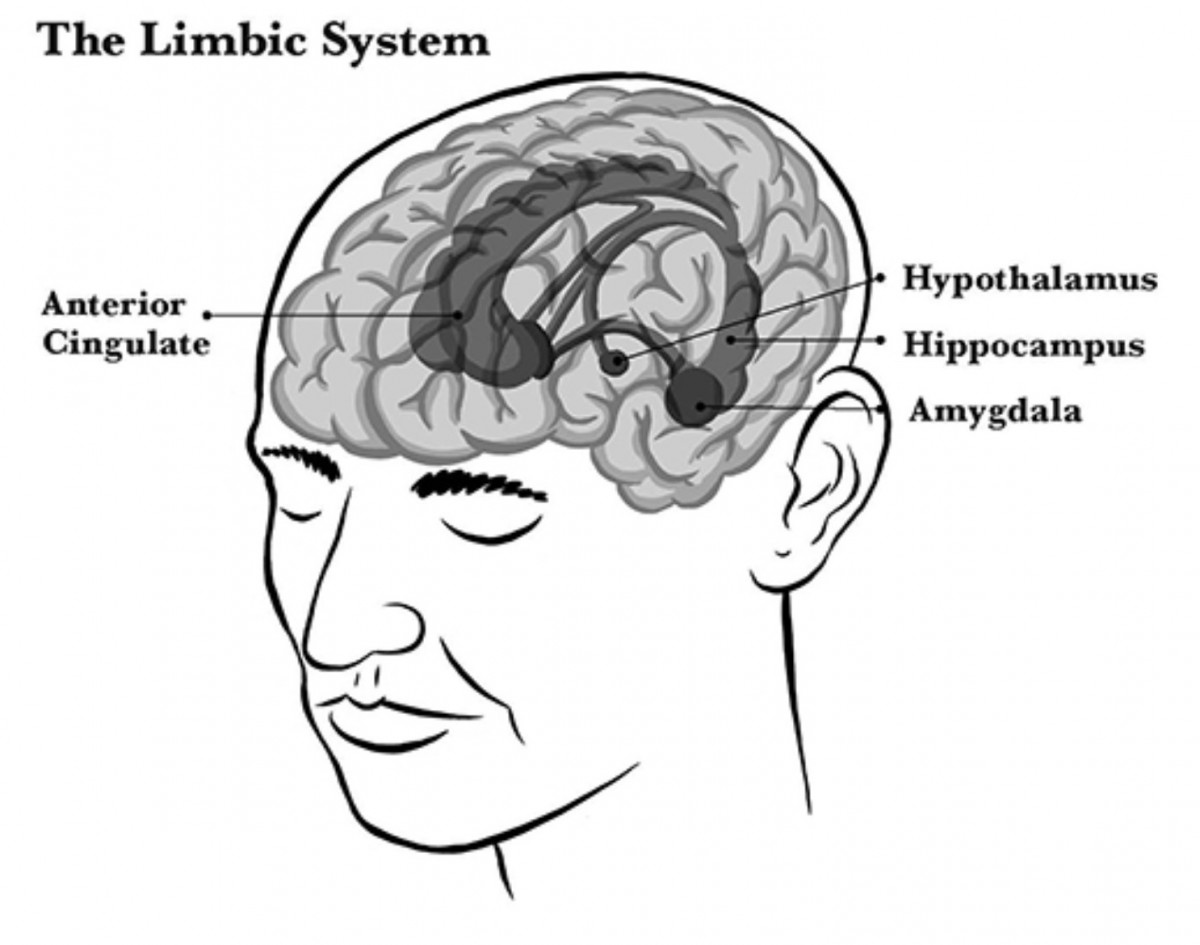
The hypothalamus controls stress. The hypthalamus is located in the central limbic region. The hypothalamus regulates numerous hormones and controls the stress response.
The amygdala is the key to reducing anxiety, fear and other negative emotions. Amygdala mediates anxiety.
Amygdala is an ancient structure deep in the brain, which is closely connected to the hypothalamus and is a centran part of the emotional limbic system.
The hippocampus is responsible for creating long-term memories. Its neurons are very sensitive to stress. The hippocampus is closely tied to the amygdala and hypothalamus and is essential to learning and memory.
The hippocampus sits deep in the brain, adjacent to the amygdala; it also have strong connection to the hypothalamus. The primary job of hippocampus is turning the short term memories into long term memories and is responsible for forming new memories. It particularly likes to save emotional memories.
Hippocampus is also central to context dependent memory.
The cingulate cortex controls focus and attention. The front of the cingulate - the anterior cingulate - is covered by the frontal cortex and is closely connected with it, often functioning as a gateway between limbic and prefrontal regions. The anterior cingulate notices all mistakes, plays a central role in the pain circuit and contributes to tendency to dwell on everything that is going wrong. The anterior cingulate manages attention to the negative or the positive.
The anterior cingulate shows only the part you are paying attention to and has a huge impact on what you and up doing.
The connected parts
In addition to the prefrontal cortex and limbic system, two other regions play important roles in habits, enjoyment, addiction and pain:
- Striatum
- Insula
The stiatum and insula are both closely connected to the fronto-limbic system and in fact, scientists some time lump parts of them into the limbic system.
The striatum is an ancient subcortical region deep below the surface inherited from the dinosaurs. it is rely havily on the neurotransmiter dopamine to function properly. The stiatum has two main parts that are particularly important:
- the upper part => dorsal stiatum
- the lower part => nucleus accumbens
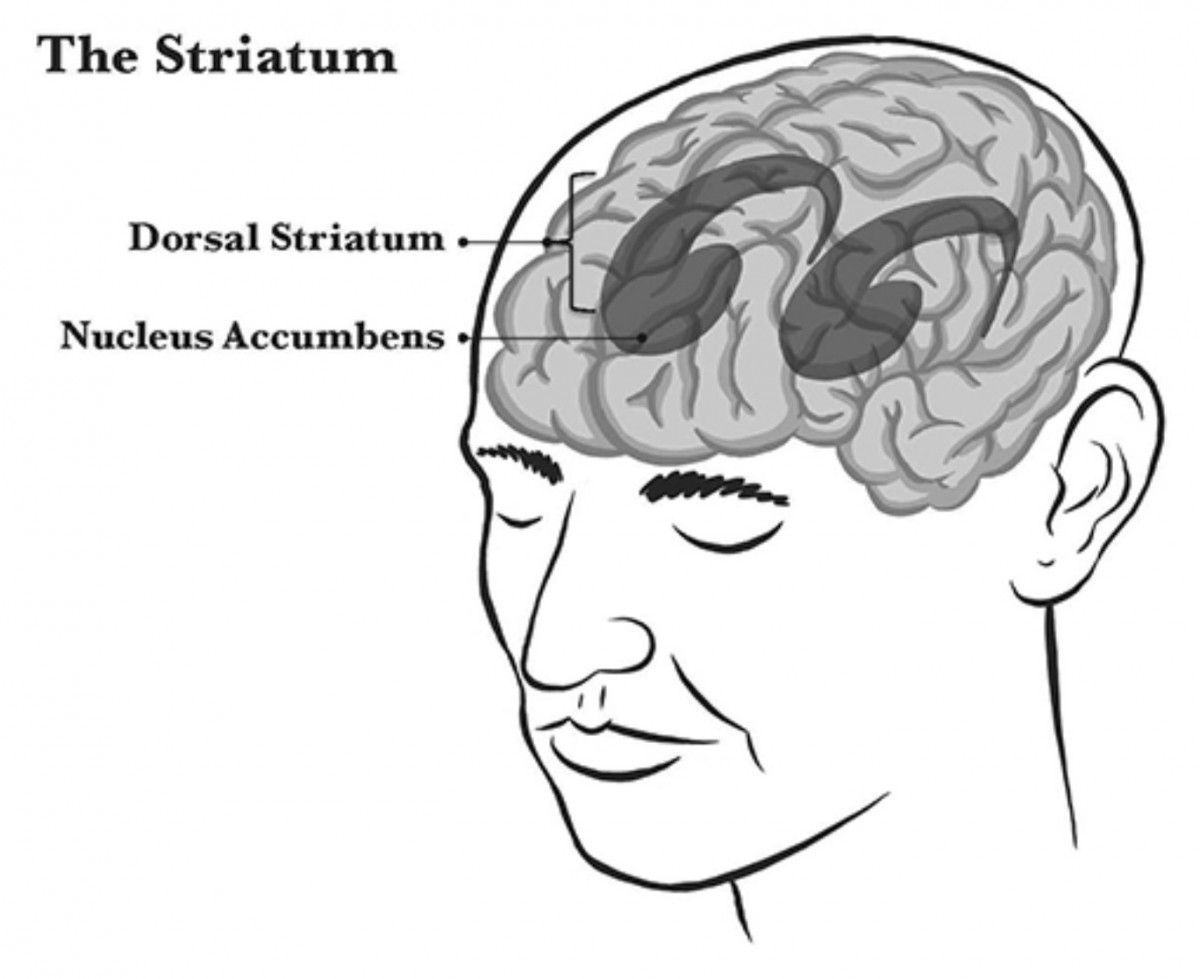
The dorsal stiatum is the brain's habit circuit; The dorsal striatum controls most of good and bad habits. Habits are behaviors you do automatically, without thinking. The dorsal striatum acts out old habits.
The nucleus accumbens are responsible for impulsive behavior, like eating too many sweets or even addictions. Dopamine is released in the nucleus accumbens whenever you do something fun and exciting or at lest it is supposed to. The nucleus accumbens controls enjoyement and impulses. The nucleus accumbens is closely connected to the limbic system and often is considered as part of it.
The insula is part of the cortex that folds inward a couple inches from your ears, sitting close to the amygdala and hippocampus.
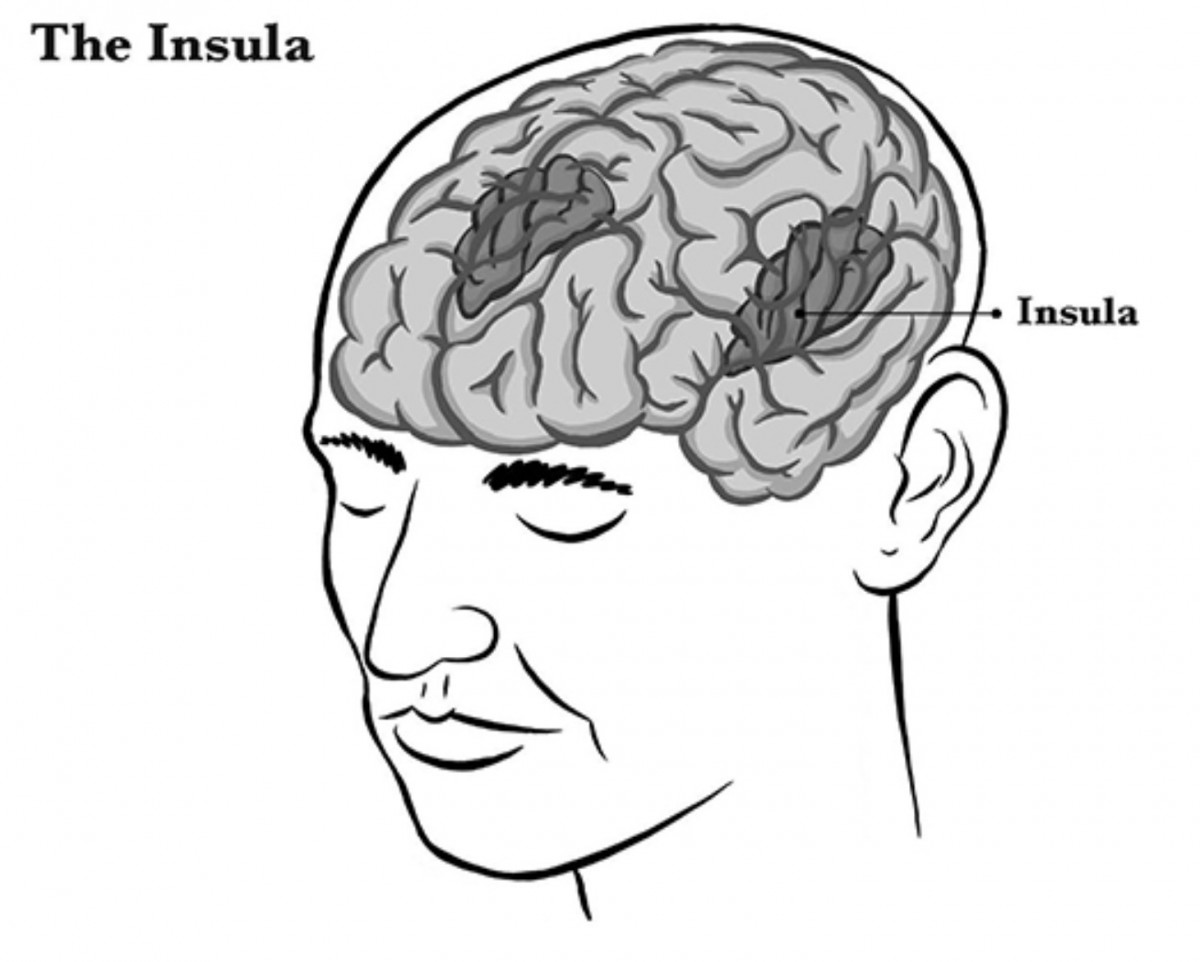
The insula is one of the main regions in the pain circuit and contributes more generally to bodily awareness.
The insula is responsible for emotional sensations.
Conections:
The anterior cingulate connects to the ventromedial and dorsolateral prefrontal cortex, the insula and the amygdala.The dorsolateral prefrontal cortex connects the ventral prefrontal cortex, the dorsal striatum and hippocampus.
Parts of the ventral prefrontal cortex connect to the amygdala and nucleus accumbens.
Because neural circuits rely on some of the same brain regions, they interact dynamicaly.
In the brain increased emotional amygdala activity can change what the anterior cingulate focuses on, as well as the habits controlled by the dorsal striatum.
Different regions often rely on different neurotransmitters:
- The prefrontal cortex rely a lot on serotonin and norepinephrine to function properly
- The stiatum depends mostly on dopamine
Neurotransmitters
The contributions of different neurotransmitters:Serotoninhelps with impulse control, willpower and resilience.
Dopamine is important in enjoyment and habits.
Norepinephrine modulates focus and concentration.
Oxytocin is esential to close relationships.
GABA(Gamma-aminobutyric acid) helps with anxiety.
Endorphins are important in elevation and pain relief.
Endocannabinoids help in gaining appetite and peacefulness.
BDNF (Brain-derived neurotrophic factor) help grow new neurons.
References:
The Upward Spiral, Using Neuroscience to Reverse the Course of Depression, One Small Change at a Time, By: Alex Korb

